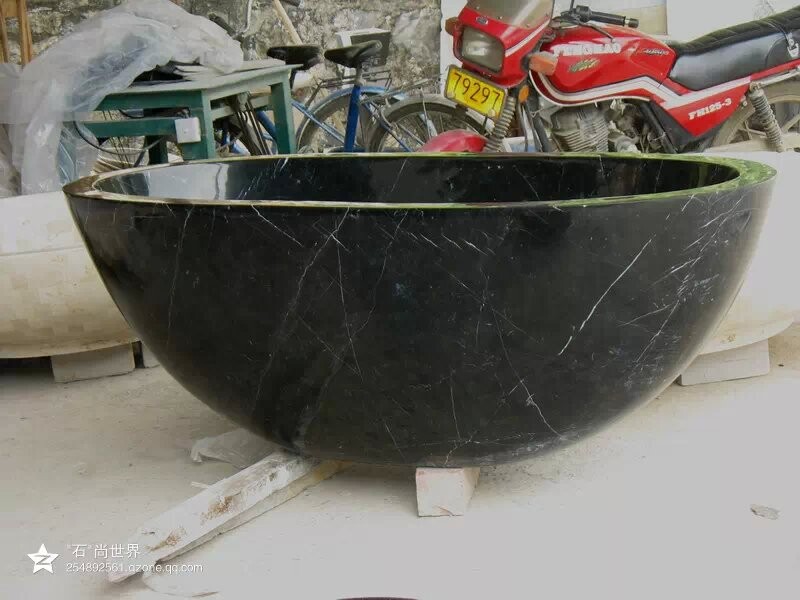How Natural Stone Bathtubs Are Made?
Before we discuss the advantages and disadvantages of a natural stone bath further and deeper, let’s acquaint you with the process of its manufacturing.
There is a very slight change in the process of quarrying natural stones and shaping them into bathtubs. However, the process is the same for all common natural stones, whether it is marble, granite, sandstone, or travertine.
For instance, a natural stone, like marble or granite, is usually quarried from a commercial mountainous site in some remote location. Special equipment is needed for drilling holes via which the diamond wire cable run. Furthermore, motorized equipment is needed to draw cutting cables through the natural stone. It is similar to the way a chainsaw would cut wood until a huge piece of stone weighing a lot of tons is being separated from the nearby stone during the quarry.
Next, the large stone block is cut down into small pieces, each weighing a few thousand pounds. It is lifted with heavy cranes on massive trucks and further these blocks are transported to a cutting yard. At the yard, a gang saw with various cutting blades can cut the block into separate slabs. After that, the slabs are further sculpted in form of bathtubs of different shapes. Depending on your bathroom interior and your individual preference, you can decide what bathtub shape you want for your powder room.
Now that you are aware of the way how natural stones are quarried and sculpted into bathtubs, let’s discuss the pros and cons of natural stone bathtubs. After this, you can make the right decision of buying the best natural stone bath for your home.

